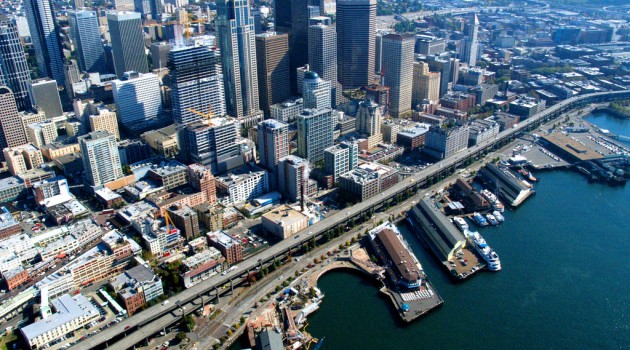
This is the second in a series of blog posts that highlight stories from other cities and regions that have faced challenges comparable to that of the Syracuse region and the I-81 corridor. To read other blog posts in the series, click here.
Seattle’s Alaskan Way Viaduct is a double-decker highway with four lanes in each direction that carries State Route 99 through downtown along its Puget Sound waterfront. The viaduct was damaged by an earthquake in 2001 and is at risk of more serious damage or failure if another significant earthquake occurs.
Planning efforts are currently underway to replace the structure and a number of alternatives have been considered. These include a new elevated structure, several options for full or partial cut-and-cover tunnels, and a “Streets and Transit” alternative. This last alternative includes replacement of the viaduct with a boulevard, reconnecting and improving the downtown street grid, and increasing transit service to and through downtown.
Most recently, the City of Seattle, King County, and the Washington State Department of Transportation (WSDOT) agreed to proceed with a bored tunnel alternative. This tunnel would be substantially deeper than other “cut and cover” tunnel alternatives that were considered previously, and it would provide no intermediate access points along its length. The bored tunnel is the highest cost alternative, but one factor in its favor is that it could be constructed while the existing viaduct remains open.
To read more about the Alaskan Way Viaduct replacement and how it compares with The I-81 Challenge process, check out a full version of the Case Study Report.





















Comments are closed.